What is a Warehouse Management System?
Want to improve your warehouse operations but don’t know where to start?
Maybe you’ve already chosen the best ecommerce platform and third-party logistics company. Now, you’re ready to crush your supply chain.
Streamlined business operations mean less headaches, greater production, and increased profits. Warehouse management solutions can level up your optimization goals so you can earn more in less time.
Defining WMS: Its Role and Importance
Successful logistics operations are about warehouse control and management of daily activities. Your warehouse is at the heart of an efficient supply chain.
A warehouse management system (WMS) streamlines the movement of goods and materials from your supplier to your customer.
For example, if your house is organized, you can find what you’re looking for quicker. You can also get out of it faster without furniture blocking your pathways. And, you can enjoy the space you’re in because it is customized for your use and habits.
You can apply the same organizational traits to a warehouse. For a WMS, these consist of processes and software systems.
WMS software systems provide a real-time overview of:
- warehouse inventory, whether in-house or in transit
- your workforce
- transportation and integrated logistics activities.
With efficient warehouse management, you can deliver more to your ecommerce customers, faster. That means more money in your bank.

The Evolution of WMS
With new technology, WMSs have evolved past manual tracking processes. Their logistics management now considers:
- digital warehouse management system processes
- the Internet of Things (IoT)
- ERP software and orders with ERP
- automation
However, some warehouse processes and flow are still tracked using:
- a pen and paper
- physical receipts
- purchase orders.
This is time and labor-intensive, less efficient, and leaves room for errors.
Enter digitisation. Barcode scanning, QR codes or radio frequency identification (RFID) labelling enables systems to integrate billing and related software so that products can be:
- automatically received
- checked
- stored
- retrieved
- confirmed against digital purchase orders.
These types of labelling are automatic identification and data capture (AIDC) technologies. They can provide inventory visibility across all locations.
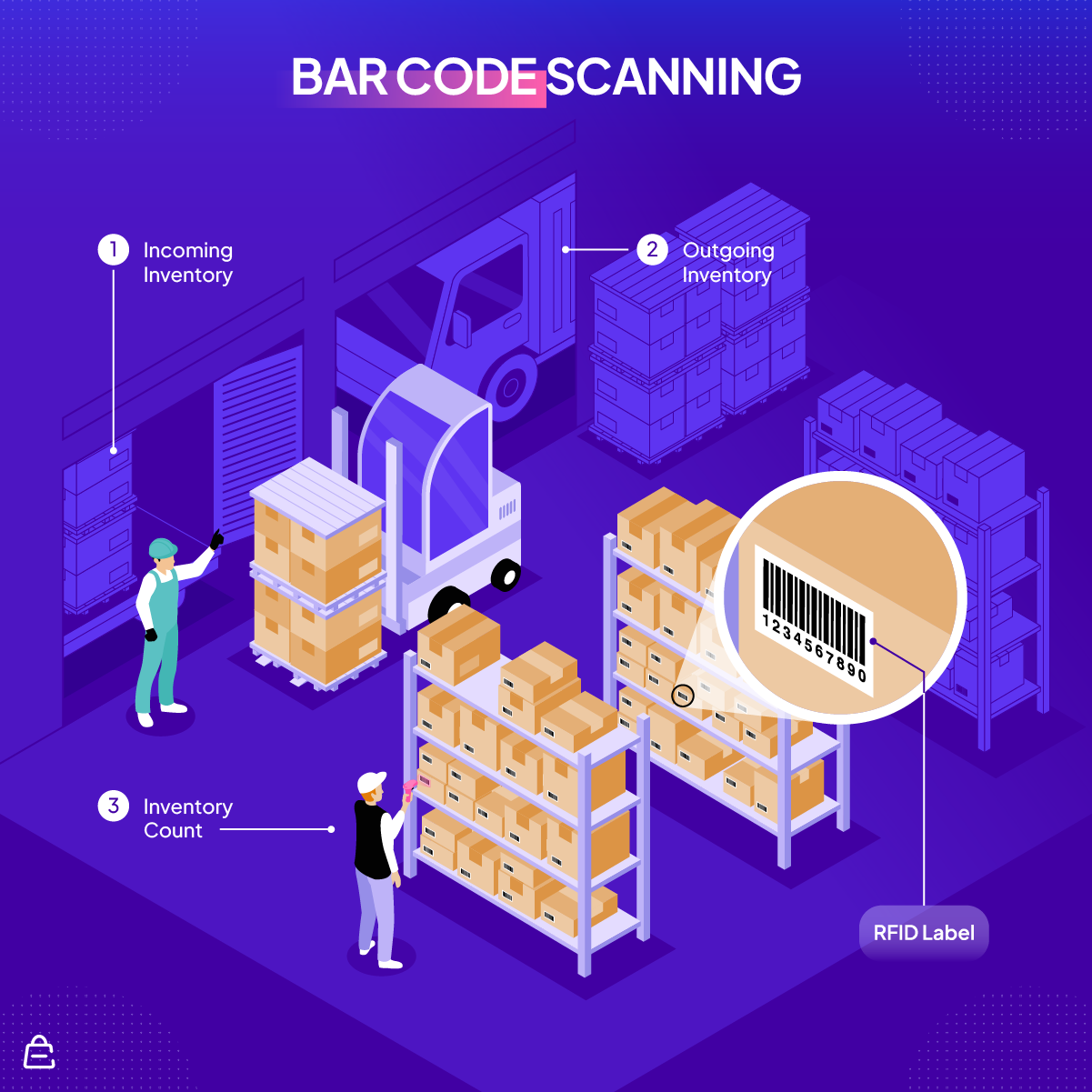
With the help of advanced analytics and intel into product and vendor performance, together warehouse management can support:
- cycle counting (regular counts of inventory and matching to inventory records)
- demand forecasting.
This can help you quickly adjust inventory levels so there’s the right amount of stock to meet customer demand. In turn, this also reduces waste and operating costs.
Some contemporary warehouse management systems use radio frequency to streamline picking, packing, and fulfillment. While other global warehouse management systems use pick-to-light and pick-to-voice processes.
Warehouse control system technology can also include:
- advanced robotics
- augmented reality (AR) wearables
- transportation management systems (TMS)
- Enterprise Resource Planning, or ERP systems
- extra logistics software.
Benefits of a Warehouse Management System
If your ecommerce business has in-house inventory, a WMS can help you boost efficiencies so you can save money and fulfill more orders. Here’s how.
Streamline warehouse operations by:
- keeping an eye on full inventory, on the move or in stock
- tracking inventory using inventory management software
- reducing errors in picking and shipping
- slashing duplication of work
- speeding up fulfillment and shipping
- addressing replacement opportunities
- cutting waste and costs by identifying and picking certain items first.
Utilize and allocate labor resources more efficiently by:
- pumping up morale through a safe, organized, and relaxed environment that puts workers’ needs first
- monitoring worker warehouse performance with key performance indicators (KPIs) to assign workers to their most efficient areas.
Improve customer and supplier relationships through:
- suppliers waiting less at loading bays and docks
- faster and more accurate deliveries
- better customer experience, satisfaction, and improved brand loyalty.
Continuously improve systems and processes by:
- tracking real-time analytics
- producing accurate demand forecasting
- analyzing warehouse operations for improvement areas
- creating warehouse space which is more efficiency and saves time and money.
How Does a Warehouse Management System Work?
A WMS is vital to efficient supply chain management because it helps streamline and manage the order fulfillment process.
WMSs are often used by:
- ecommerce fulfillment centers
- large distributors
- cold storage and healthcare companies.
The supply chain process can be slowed down or disrupted when a warehouse does not have supplies ready to fulfill an order. A WMS can ensure processes work together smoothly by:
- keeping track of inventory
- organizing and grouping products together for accessibility
- shipping and tracking orders on time.
A WMS helps manage warehouse:
- stock
- fulfillment
- shipping and receiving
- picking goods
- workforce
- layouts.
For extra oversight, efficiency, and savings, WMSs can be used with other related systems like inventory or transportation management systems.
Key Features and Functionality of WMS
Some of the key features of a WMS solution include:
- maximizing warehouse design
- advanced inventory tracking
- receiving and putting products away
- efficient picking and packing of goods
- optimized shipping and shipping costs
- enhanced labor management
- tighter yard and dock management
- in-depth reporting
- warehouse automation
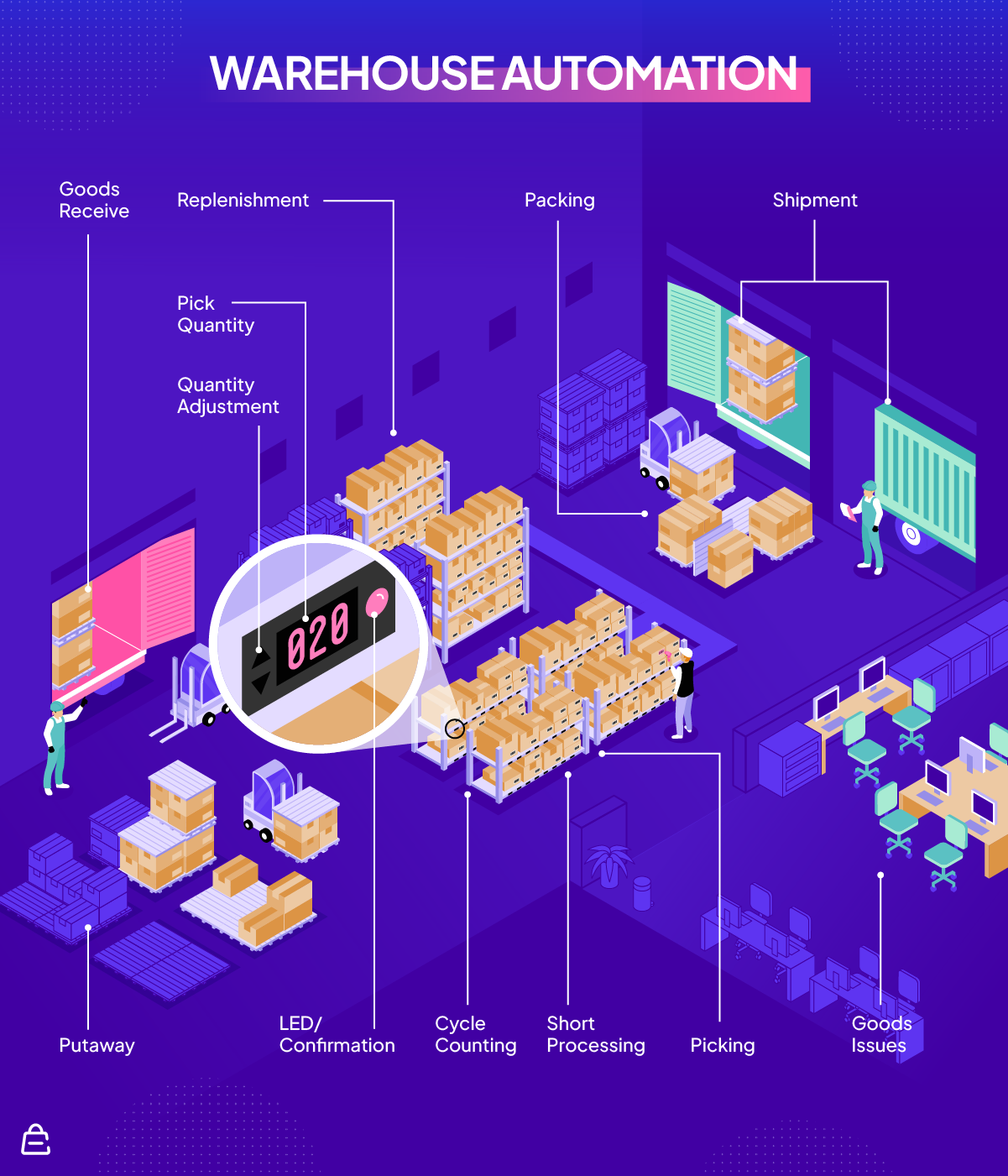
Optimizing warehouse design
WMS warehouse design allows you to:
- customize your warehouse workflow
- create more efficient workspaces optimized for inventory allocation.
It can also help you maximize your warehouse storage space. Do you use something often? It will be assigned to an accessible area. Are certain materials or products heavy and used less often? These will be allocated to an area that needs to be accessed less.
Advanced inventory tracking
Automatic identification and data capture (AIDC) provides advanced inventory tracking capabilities. Without any human interaction, this technology will:
- automatically identify objects
- collect data about them
- enter this data straight into a system.
Advanced inventory tracking technology could also include RFID and bar code scanning. These ensure your products are easily located, stored, and moved.
Efficiently receiving and putting away goods
For fast receiving and putting away of products, pick-to-light or pick-to-voice technologies can help warehouse workers locate products.
Pick-to-light can improve accuracy and efficiency, lower labor costs and is paperless. Once you scan a barcode, a system’s alphanumeric display will light up, creating a lighted path to the product’s storage location. It can reduce training and walking in your work zone.
Pick-to-voice, also known as voice-directed warehousing, is, as it sounds, speech-based picking. It is paperless, eyes and hands-free and directs pickers by voice prompts to picking locations. Like pick-to-light technology, this can increase productivity by amping up concentration on the task at hand. It can also mean less training time, and open up employment opportunities for workers with eyesight issues.
Picking and packing like a pro
Zone picking, wave picking, and batch picking can expedite the picking and packing workflow.
Workers in one section, or zone, pick in the assigned zone for efficient movement and to decrease time spent picking.
Wave picking focuses on the flow of daily work to cluster the picking system for efficiency.
Batch picking is also called multi-order picking, which means there are fewer repeated trips to the same location by ‘batching’ up the orders simultaneously.
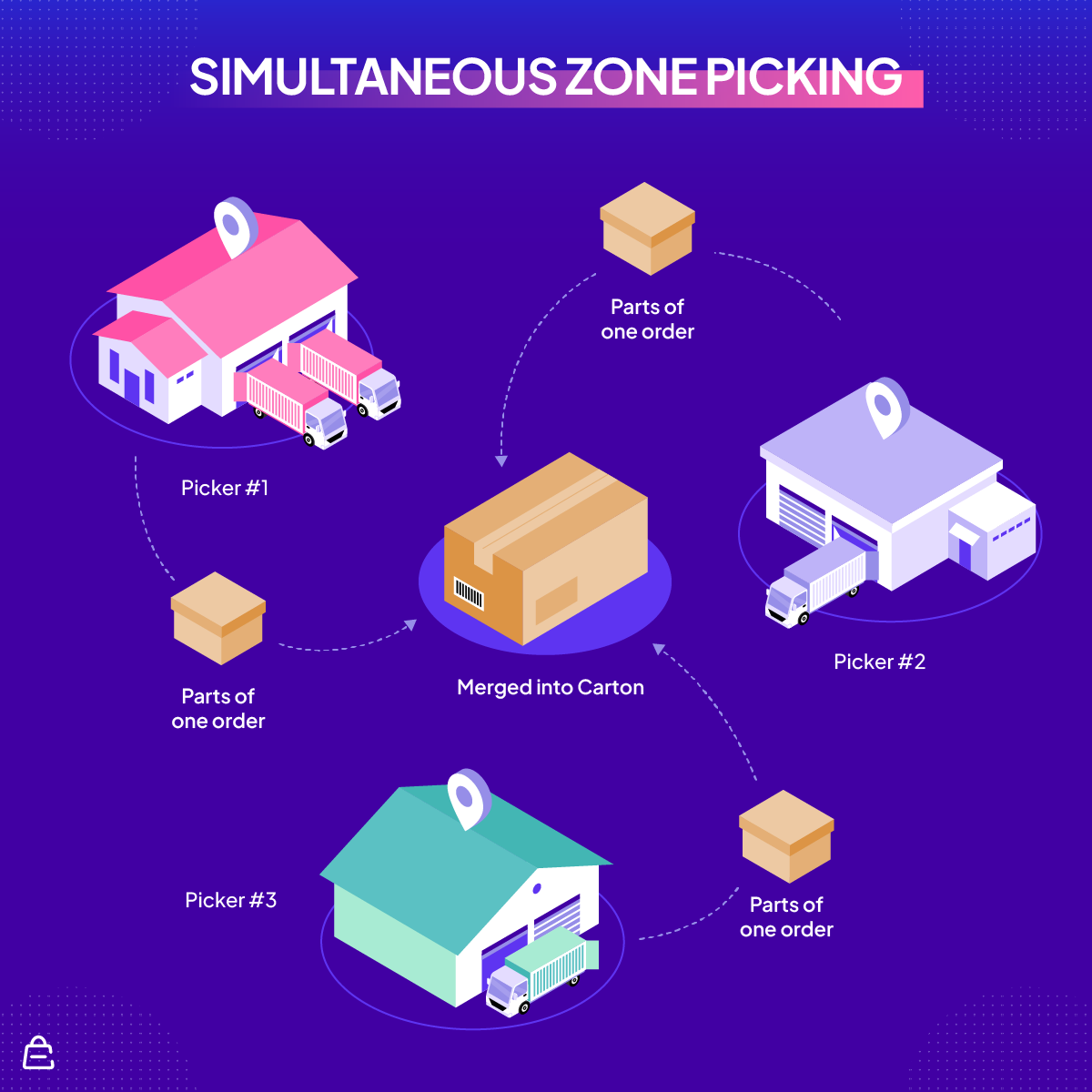
Better organized, advanced shipping
To optimize shipping, a WMS can send bills of lading ahead of the shipment. This could include generating packing lists and invoices for the shipment and sending shipment notifications to recipients in advance. This gets you ahead of the curve and keeps accurate records for receipt of goods all in one go.
Enhancing and incentivizing your workforce
Warehouse managers can use WMSs to identify areas of improvement or strengths in workers’ performance. This is done through reviewing key performance indicators (KPIs) that indicate workers who perform above or below specified standards. You can use these metrics and analytics to:
- move workers to more efficient stations
- reward workers that perform over baseline productivity
- keep a historical productivity baseline for any newly onboarded workers.
Perfectly timed loading and dock operations
A WMS can help organize entry and exit timing into yard and dock. This is done by assisting truck drivers to run on time by finding the right loading docks.
Take this further by timing use of multi-dock inbound and outbound logistics to reduce bottlenecks. This frees up docks so you can ship more products more efficiently.
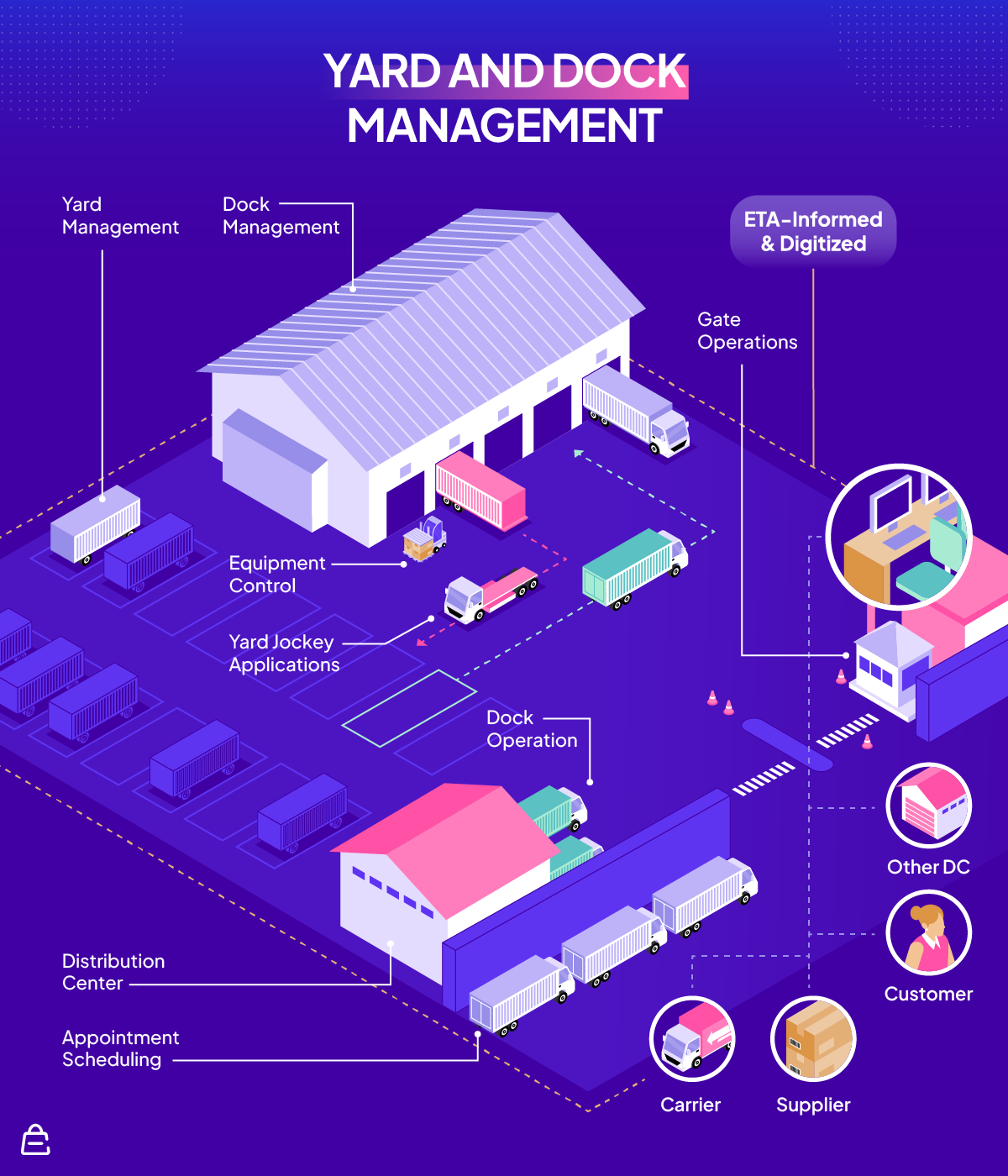
Applying advanced analytical insights
Enhanced, holistic reporting from WMSs can help you analyze the performance of warehouse operations to find improvement areas. This could be across warehouse operations or the labor force.
Types of Warehouse Management Systems
Standalone WMS
A standalone WMS is an independent system on premises using your company’s hardware. This type of WMS can give your business more:
- customization options
- organization capabilities
- greater control over software and data.
However, organizations are responsible for any related updates, maintenance, and additional costs.
The initial setup cost is higher than other types of WMSs. However, once this is set up, it is owned by your company.
As a standalone product, integration with other platforms and adding new technologies can become increasingly difficult as the system ages and becomes a legacy WMS.
Supply chain modules
A supply chain warehouse management module can:
- be a single module or category of modules within a supply chain management system
- integrate with supply chain platforms.
The benefits of this system are that it can:
- optimize supply chain operations
- provide fast, agile fulfillment customer experience.
Integrated enterprise resource planning (ERP) systems
The main logic of this type of advanced WMS is its transactional capability on a large scale. These systems provide a holistic view across your business and logistics chain for end-to-end transparency of warehouse and logistics processes. The integrated ERP system is designed to bring together many facets of a business and provide critical real-time visibility to help align business decisions and goals.
Cloud-based WMS
Delivered as Software-as-a-Service (SaaS), this style of system can be set up rapidly with lower upfront costs. It is becoming a preferred solution, as it can provide:
- managed installation and upgrades
- managed, regular, low-maintenance updates
- flexibility to tailor to specific market conditions or seasonal needs
- easier integration with other systems and solutions
- robust security measures and recovery capabilities
- scalability as your company grows.
The Impact of WMS on the Supply Chain
As a critical component in your supply chain, warehouse management systems can optimize your distribution. Staying ahead of potential disruptions by enhancing efficiencies can keep your warehouse resilient when the unexpected happens. By implementing a solution that streamlines warehouse facilities, you could increase your competitive advantage.
According to The State of Small Business Report by Wasp Barcode, 43% of small to medium businesses still use a manual method for tracking inventory or do not track at all. This creates room for human error and potential profit loss, both of which could be a double punch to growth.
The Role of WMS in Inventory Control
A WMS allows you to keep track of inventory levels at any time and in any location. By using a WMS to ensure products are stored, sorted, and shipped accurately, you know all warehouse operation processes are on target.
You’ll have real-time inventory updates and knowledge while reducing potential loss of product and profit. This could be used to implement just-in-time inventory, which schedules the arrival and departure of stock for the most efficient use of storage and warehouse space.
WMS and Order Fulfillment: A Dynamic Duo
Order fulfillment means your product gets into the hands of your customer. By definition, it’s a pretty important part of the process for happy and loyal customers. Your warehouse is your distribution or fulfillment center, and you want to ensure it’s running on point to get your products to customers.
When you have a proven warehouse management system in place:
- your warehouse operations run effortlessly
- the correct products are easily filled, shipped, and received by your customers on time
- order management is a breeze.
Inventory vs. Warehouse Management
Inventory management is powerful for an effective supply chain. It is the process you use to track products, goods, or materials that your business uses to produce or sell to customers. With the right inventory management system, you know when your stock levels are high, low, or about to sell out.
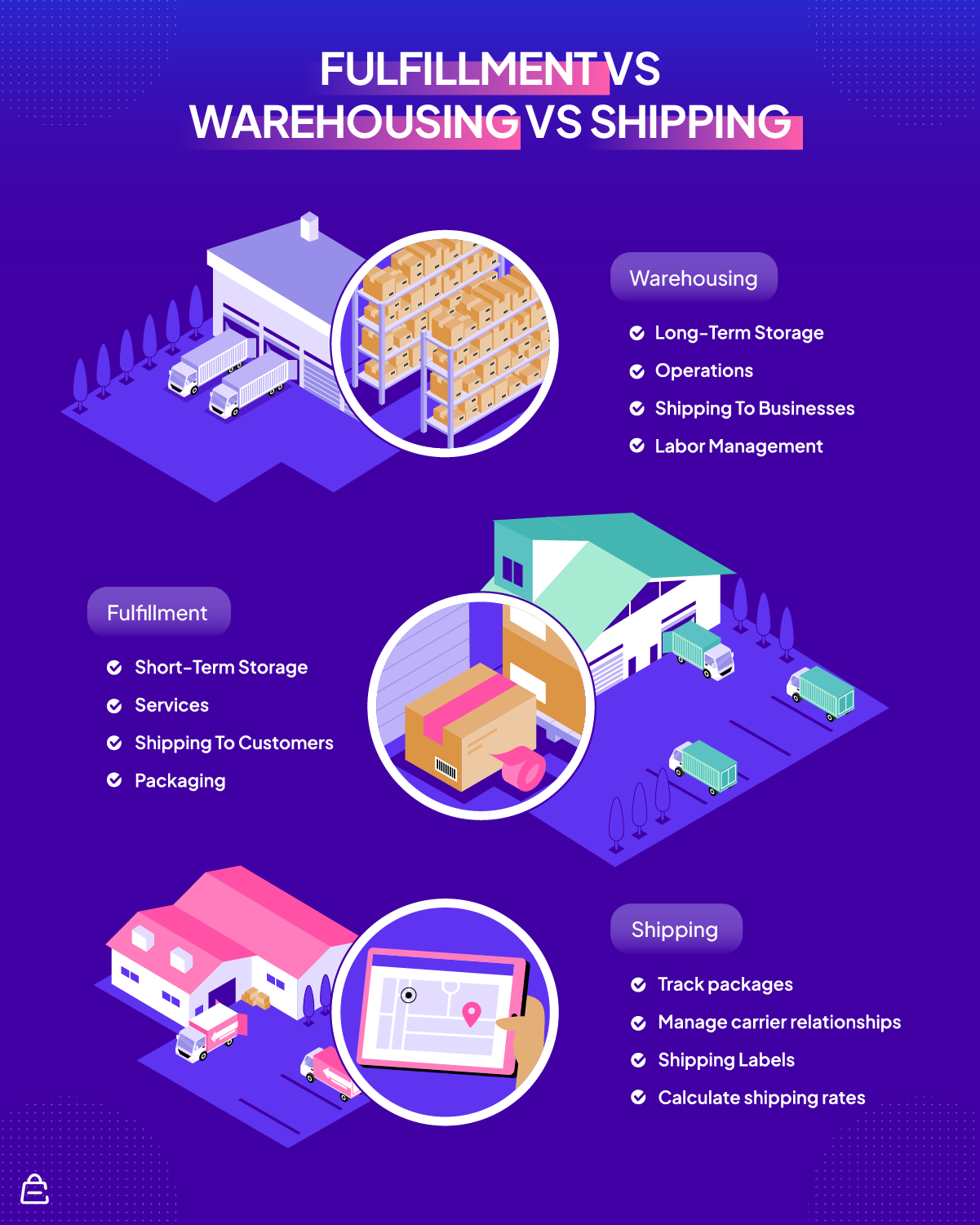
Inventory management is a facet of warehouse management, which oversees all daily warehouse operations and processes. This includes not only inventory but storage, packing processes, receiving, and shipments from the warehouse.
Costs Associated with WMS Implementations
WMS solutions run on licensed software. Cloud-based or on-premise solutions have different cost structures.
If you opt for a subscription-based solution, you will pay a monthly subscription license fee. For perpetual licenses, you will pay an up-front fee.
Cloud-based license costs
Cloud-based solutions are usually priced per user or number of warehouses and in tiers of service offerings. If you’ve got multiple warehouses, you may consider per-warehouse pricing instead of per-user pricing across multiple warehouses.
For Software-as-a-Service (SaaS) system subscriptions, organizations spend around $167 USD per user per month. Per user, expect to pay at least:
- $100 per user for basic functionality and entry-level services
- $300 for mid-range functionality and services
- $500+ for enterprise-level solutions.
The subscription usually includes license and annual fees and hosting costs.
To help keep costs down, you could ask for a trial rate or entry-level pricing for a new WMS. As a loyal or returning customer, you could ask for a renewal discount. It never hurts to ask. You can also try WMS vendors that allow you to pick the licenses you need, with the option to scale as your demand and business grows.
Perpetual (on-premise) license costs
For perpetual, on-premise licenses, you could pay between $10,000 and $50,000 per location for mid-range services that include automation.
You could start with an entry-level WMS, but the license will be limited in both inventory and automation support. It’s probably not going to offer you the services you need to optimize and increase efficiency.
Enterprise-level WMS can run up to $200,000 if you have the latest in robotics and automation bells and whistles.
You’ll also want to factor in an annual maintenance fee while you’re using the software in your business. This can be 10 – 20% of your WMS license cost. The support includes:
- updates and upgrades
- security patches
- tech support for your software.
Table: initial setup costs for SaaS and on-premise WMSs
| WMS pricing | Entry-level | Mid-range | Enterprise |
|---|---|---|---|
| SaaS (per user/month) | $100 | $300 | $500 |
| Perpetual license (per warehouse) | $2,500 – $10,000 | $10,000 – $50,000 | $20,000 – $200,000 |
Labor Costs for Installation and Maintenance
Cloud-based and on-premise solutions can both be expensive to set up.
The cost for setup depends on:
- business requirements
- current systems
- scale and complexity of your business needs
- integration requirements
- the system modules you choose to implement.
With cloud-based services, you’re responsible for ongoing hosting fees and Internet connectivity to ensure seamless running of software. Other key hardware costs could include:
- network and maintenance costs
- radio frequency and voice devices for picking
- label and laser printers
- hardware support items like power supplies, motherboards, USB ports
- any material handling equipment like tools, storage units, or vehicles.
Perpetual (on-premise) license costs
While on-premise systems typically have higher installation costs, the vendor is more likely to provide customization as part of the installation price. Also included are database verification, integration, and configuration.
Factors to Consider When Choosing a WMS Software Solution
The level of warehouse management system you choose may determine functionality.
If you’re a small business, you may be able to get by with a more basic WMS. Mid-range systems can offer more functionality and integration than entry-level systems. Enterprise systems can offer more customization. Usually, you’ll pay more as your WMS includes more features. Therefore, it’s important to understand your business needs first so you can choose the WMS and functionality that works for your business.
Real-Time Data and Visibility
Real-time data, analytics and visibility can be powerful to improve your warehouse logistics by creating efficiencies and understanding where improvements can be made. For example, you can:
- see where your inventory, stock and freight are
- understand how your workforce performs.
Understand what type of data you need to see in real-time to ensure efficiencies in:
- inbound logistics
- controlling inventory
- outbound order processing
- shipping and loading
- yard management and appointment scheduling
- receiving
- reverse logistics
- cross docking
- picking and putting away
- shipping documentation.
Storage Space Utilization
Slotting optimization helps you figure out the best locations for your stock. It is strategic grouping and storage so you can make the most efficient use of your warehouse space.
Proper storage space utilization can help improve:
- workforce safety
- productivity
- order accuracy.
This is achieved by improving accessibility, location, and storing heavy products or stock towards the back of your warehouse where it’s not in the way.
Raw Materials & Inventory Management
If your ecommerce business has raw materials, how’s best to group, organize, and allocate space to them? How will they be stored, accessed, and used efficiently? A WMS can help you unpack this.
What level of inventory management do you need? You’ll need some form of it to run your operating costs accurately and reduce waste. It could be basic or high-tech, depending on your budget and needs.
Transportation & Supply Chain Management
You may have to coordinate multiple warehouses or multiple entry and exit loading docks. If efficiency of this finite space is important to you, consider a WMS with transportation optimization.
Would you like your warehouse supervisor team to spend more time on the warehouse floor? Engagement can improve:
- staff productivity
- employee satisfaction
- order turnaround times.
To optimize this area of your supply chain management, warehouse mobility and handheld devices can keep warehouse teams connected, communicating, and delivering.
Labor Management & Mobile Device Integration
Labor management features can help track productivity improvements and assess areas where staff are high performers. By tailoring worker experience to a section or area they succeed at, you will boost productivity, incentivize staff, and can reward them for delivering strongly. Some ways you can do this are:
- Track your team against past averages such as pick tasks per hour.
- Set a target productivity goal to beat based on a historical picking tasks average.
- Set a reasonable productivity expectancy based on a past historical picking average.
- Add a productivity pay incentive for employees performing highly and delivering productivity improvements.
You can even integrate these features on a handheld device so that you can walk the warehouse floor, engaging with your workforce. This can help boost morale and productivity.
Viable WMS Options
Choosing a warehouse management system provider is a critcal choice for any business. We’ve put together a few options for you to consider:
We hope this information was helpful in getting you a base understanding of how warehouse management systems work.









